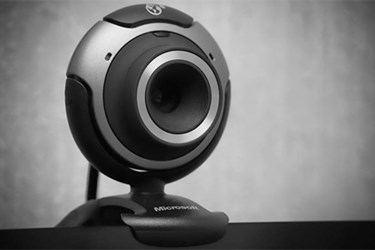Can Webcams Detect Heart Conditions?
By Chuck Seegert, Ph.D.

Electrocardiograms (ECGs) are currently the gold standard when detecting atrial fibrillation (AF), a heart condition that, if left untreated, can have serious consequences. ECGs are physician-supervised, but with a new technology, the condition may be identifiable with webcam and some software.
Sometimes AF will lead to heart palpitations or dizziness. Frequently, however, it is asymptomatic, and a patient may not be aware of the condition. In normal patients, the atria, or upper chambers of the heart, coordinate the beating of the organ and synchronize with the ventricles, or lower chambers. In atrial fibrillation, however, the atria contract out of synchrony with the other portions of the heart, and the condition could have long term consequences like stroke or heart failure.
“Existing ECG-based technologies are used only for patients who had symptoms,” said Jean-Phillipe Couderc of the University of Rochester Medical Center in New York in a recent article from Reuters. However, there are “approximately 3.2 million people with AF in the U.S., and an estimated 30 million people in the world,” and the only way to diagnose the condition is to consult with a doctor.
A new method developed by Couderc and his team uses a camera to evaluate a patient’s face, thus identifying small changes in color that occur with each beat of the heart, according to a study published in the journal Heart Rhythm. With cooperation from 11 subjects that were in their early to late 60s, the team was able to detect AF with a 20 percent detection rate. This may not sound very impressive, but if you consider that ECGs generally have detection rates of 17 to 29 percent, it is much more impressive.
While this is a preliminary study, it shows much promise and may allow for contactless detection of AF.
Dr. Steven Swiryn of Northwestern University in Chicago who studies AF said that the small study is “quite preliminary, and though interesting, has a number of major limitations,” according to Reuters.
Limitations included things like patients being very still during the exam and the fact that they can’t wear makeup while being studied.
While diagnosis of AF is of prime importance, advancements in treatment methods are also important in treating AF. Recently researchers developed a minimally invasive method of treating AF using a catheter to ablate troublesome tissue that may be causing the condition.
Image Credit: “Webcam grayscale.jpg,” Asim18, 2009, used under CC BY-SA 3.0: http://creativecommons.org/licenses/by-sa/3.0/deed.en
